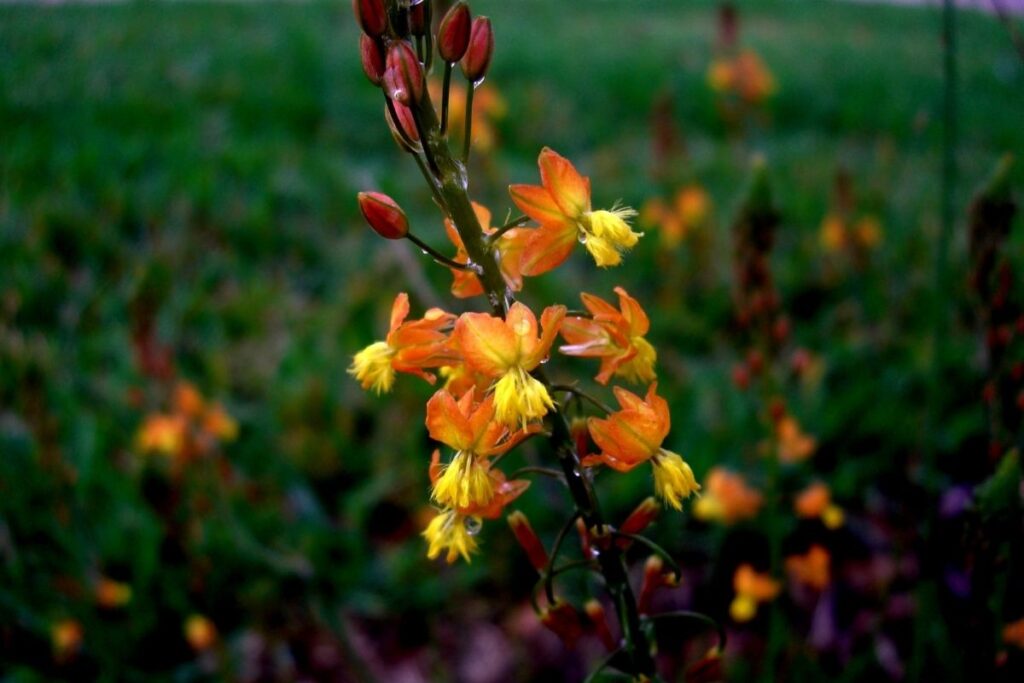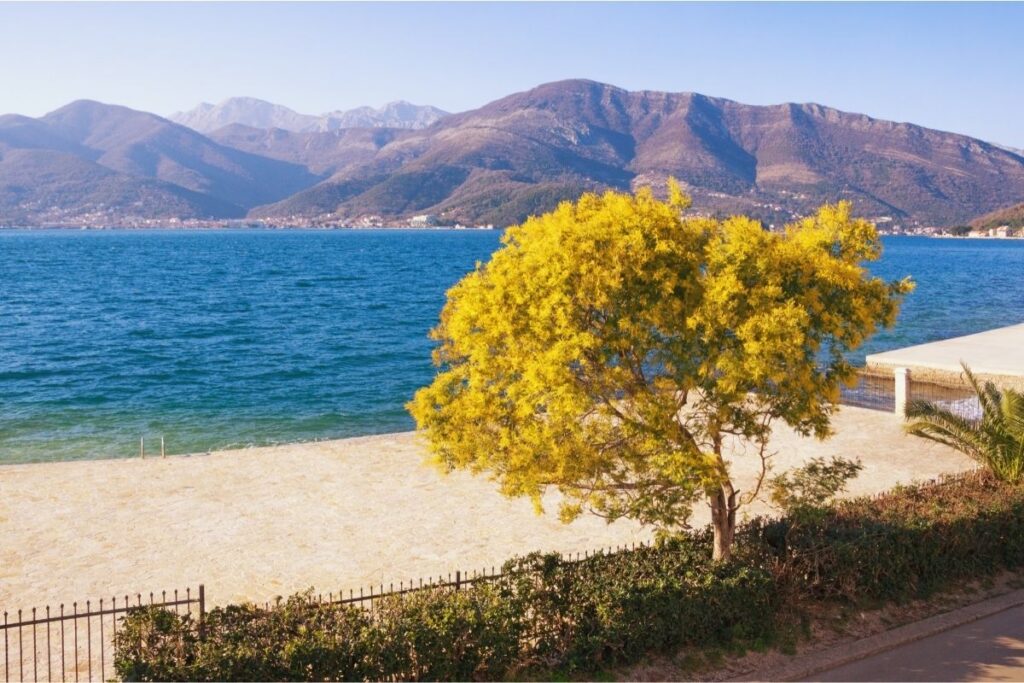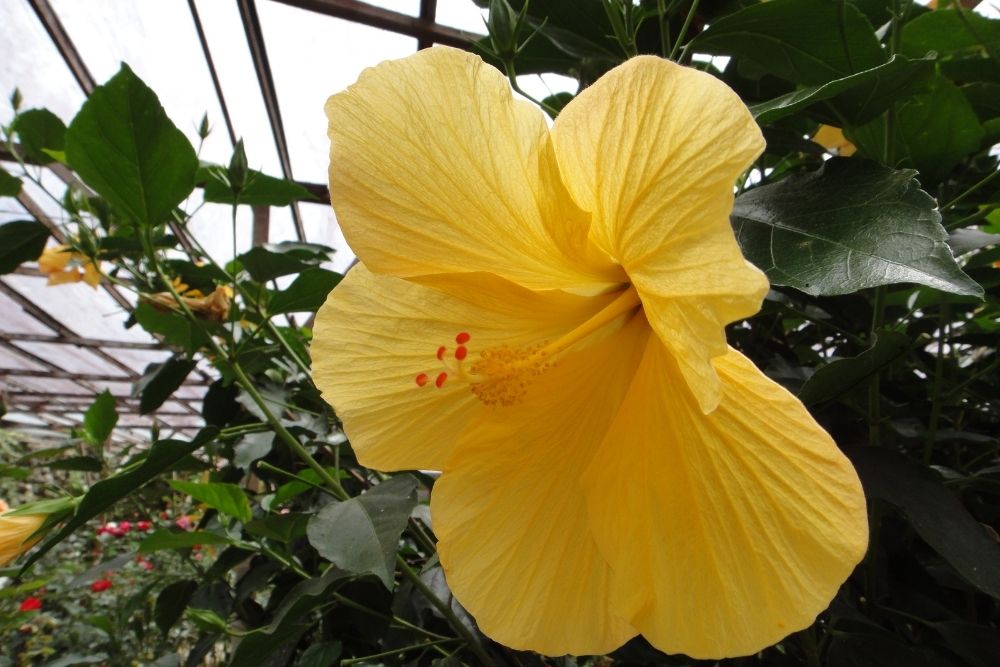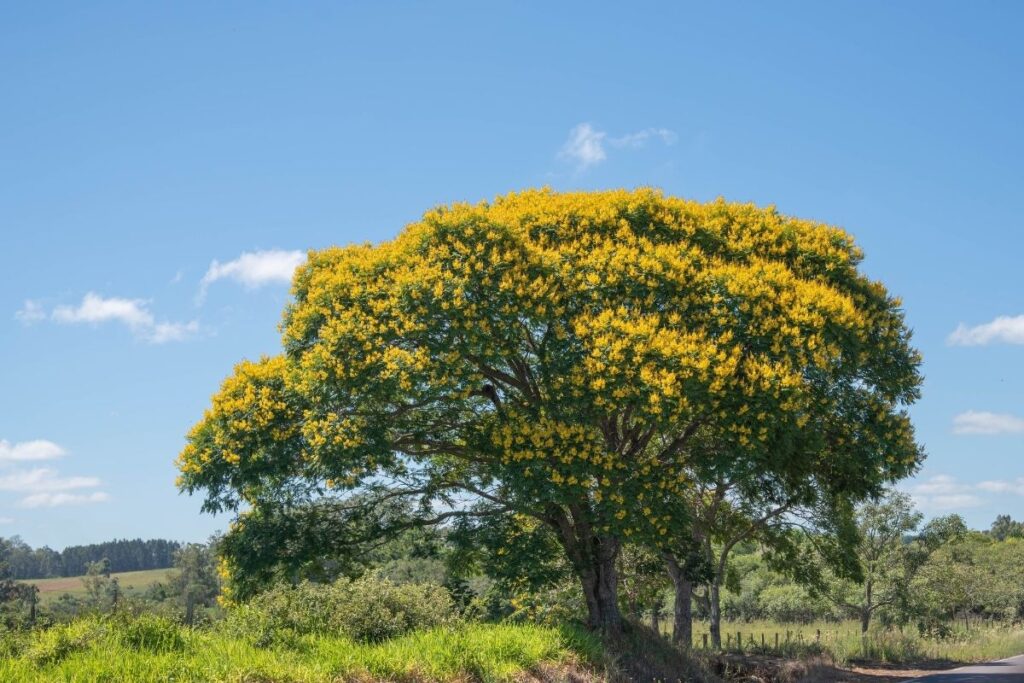
Yellow is a sunny color. It is bright and cheerful, vivid and vibrant. There are, as with all colors, shades, and hues of yellow; golden yellow flowers ; each adding its own touch of joy to the yellow palette. Golden yellow shades can vary from the yellow end of the spectrum through to an almost orange-yellow.
Golden yellow flowers add sparkle to a garden, patio, house, and any floral arrangement.
A bouquet with a sparkle of golden yellow cannot help but put a smile on the recipient’s face. It’s hard not to feel refreshed around yellow flowers.
Who wouldn’t appreciate fresh flower arrangements bursting with floral sunshine?
The color yellow is usually seen as positive and associated with happiness. It is also often considered to symbolize friendship. However, there are cultural differences in how the color yellow is construed.
The French may see yellow as symbolic of jealousy, while the Japanese consider yellow to be a sacred color with royal connotations.
The ancient Mayans associated yellow with abundance, maybe because it resembles gold. Yellow flowers honor the dead in Mexico.
Let’s feast our eyes on some splendid examples of golden yellow flowers. As you’ll see, there are all sorts of plants that produce golden yellow flowers, including shrubs, trees, and even cacti.
1. Bird of Paradise (Strelitzia Regina)

This is a type of orchid and a rather gorgeous one at that! You can see why it’s known as the Bird of Paradise because the petals look like the plumage of an exotic bird.
As the ‘regina’ in the scientific name implies, this plant has a very regal way about it. A species of evergreen tropical herbaceous plant, the Bird of Paradise is native to South Africa.
It is interesting to note that there is a taxonomical connection between the Strelitzia and bananas. The plant is actually sometimes called the ‘Banana Tree’. It’s the split leaves that give the Bird of Paradise its bird-like appearance.
https://www.thesill.com/blogs/plants-101/how-to-care-for-bird-of-paradise
2. Bulbine (Bulbine Frutescens)

The blooms of the Bulbine plant are star-shaped with tassel-like stamen poking out. A perennial plant, the Bulbine is native to South America. The blossoms are graceful and vibrant in color. The overall effect is very pleasing and gentle. The flowers are somewhat delicate.
https://www.gardeningknowhow.com/ornamental/bulbs/bulbine/caring-for-bulbines.ht
3. Carolina Yellow Jasmine or Jessamine (Gelsemium Sempervirens)

Like bright new gold, this yellow is very sparkly. Each flower can have between 3 – 9 petals, although most have 5.
As it’s a vine, this plant is best planted on trellises, arbors, along fences or under trees providing cover. The vines are covered with clusters of fragrant, yellow flowers.
https://www.gardeningknowhow.com/ornamental/vines/carolina-jessamine/growing-carolina-jessamine.htm
4. Coreopsis

A striking flower with a red center and yellow petals. Coreopsis plants grow in upright clumps. They are native to North America. The foliage varies between members of the species.
The plant is sometimes called ‘tickseed’, due to having round seeds that resemble ticks; which birds and other wildlife eat.
https://www.thespruce.com/growing-and-using-coreopsis-in-the-flower-garden-1402839
5. Craspedia (Craspedia Globose)

A profusion of flowers forming circular floral displays makes this an eye-catching plant. How could a garden not benefit from such playfully pretty displays?
From Australia, this is a rather unusual plant. It has narrow, silvery-grey leaves and wiry stalks, on top of which grow glomerules – circular structures. They make excellent dried flowers.
https://www.chilternseeds.co.uk/item_406B_craspedia_globosa
6. Daffodil (Narcissis)

A sure sign warmer weather is on its way, Daffodils are evocative of warmth and the coming of Spring. They cannot help but give you a spring in your step.
The blooms are interesting because there is a horizontal display of petals and a protruding display from the center.
https://www.homestratosphere.com/yellow-flowers/
7. Purple Santa Rita Prickly Pear Cactus

Look at the wonderful combination of colors this cactus has! Yellow flowers with the purple hue of cactus pads make for a stunning show of nature’s glory.
The cactus has short bristle-like spines. For obvious reasons, this plant serves well for color accents in gardens.
https://inlandvalleygardenplanner.org/plants/opuntia-violacea-var-santa-rita/
8. Daisy (Bellis Perennis)

The Daisy is a common wildflower in the U. K. It’s very pleasant to sit in a field and twine Daisies together in chains. Each flower has a rosette of small, thin petals. Daisies are evocative of meadows and open fields.
https://www.plantlife.org.uk/uk/discover-wild-plants-nature/plant-fungi-species/daisy
RELATED: Nature is Sweet As! 10 Different Types Of New Zealand Trees
9. Dutch Hyacinth (Hyacinth Orientalis)

A creamy pale gold yellow, the Dutch Hyacinth is really pretty. The color and arrangement of the blooms on the stalk are gentle.
The heady scent is divine and really makes this plant worth having nearby so you can catch its wonderful scent in the breeze.
https://www.ourhouseplants.com/plants/hyacinth
10. Cassia Leptophylla Tree

Trailing yellow flowers give this tree a real elegance. The tree is sometimes called the Gold Medallion Tree. It’s a member of the pea family and is related to the Golden Shower and the Rainbow Shower.
With the yellow blooms hanging down in their abundance, the tree looks like it is shot through with gold.
https://www.pacifichorticulture.org/articles/gold-medallion-tree/
11. Freesia (Spp.)

Hailing from South Africa, these gorgeous blooms bring the sun with them wherever they go.
Freesias have an intoxicating scent and the perfectly formed florets of their petals make for a very beautiful floral display.
https://www.gardendesign.com/bulbs/freesia.html
12. Graham Thomas Rose (Rosa)

The tones in this English shrub rose are sublime and blend exceedingly well to create a very beautiful rose. The blooms are cupped blooms and of an unusually rich yellow.
A light Tea fragrance, with a cool violet character adds to the allure.
https://www.davidaustinroses.co.uk/products/graham-thomas
13. Jungle Geranium (Lxora Coccinea)

With small pointy four-petaled flowers, this shrub is a delight. A simple design goes a long way in this flower. The plant is so-named because the round bloom clusters resemble annual geraniums.
The blooms, coupled with the plant’s dark, glossy foliage give these plants real appeal.
https://www.mygardenlife.com/plant-library/2472/ixora/species
14. Prickly Pear (Opuntia Humifusa)

This member of the cactus family produces delicious fruit and gorgeous flowers, but both fruit and flowers are protected by the plant’s thorns, so beware!
The petal formation of the flowers is defined and pleasing, attracting insects over to help with pollination.
Did you know that the prickly pear can be used to treat diabetes by lowering blood sugar and cholesterol levels?
Apparently, it decreases the absorption of sugar and cholesterol in the stomach and intestine, so this is not only a good-looking plant, it’s a useful one too.
https://www.webmd.com/vitamins/ai/ingredientmono-880/prickly-pear-cactus
15. Snapdragon (Antirrhinum)

A very pale golden yellow that looks like cream with a touch of gold, the Snapdragon flowers are restful on the eye. Snapdragons are low-growing plants.
The blossoms are said to resemble a dragon’s open mouth but this dragon is clearly a very friendly dragon!
https://orchidrepublic.com/blogs/news/types-yellow-flowers-meanings
16. Waterlily (Nyphaea Hollandia)

The symmetry of nature in all its glory! These amazing flowers adorning a pond in your garden would certainly be the center of attention.
The Nymphaeaceae family has 58 species in three genera of freshwater flowering plants. Water lilies play an important part in their ecosystems by providing food for fish and wildlife.
Some varieties have been developed for ornamental use in garden pools and conservatories. They are related to water shields and fanworts.
https://www.britannica.com/plant/water-lily
17. Acacia Dealbata

The Acacia Tree produces yellow flowers that look like balls of wispy cotton wool. The Acacia Dealbata is a smallish evergreen tree. It’s the classic Mimosa, with ferny leaves.
The flowers are yellow, fragrant, and copious.
https://www.architecturalplants.com/product/acacia-dealbata/
18. Yellow Butterfly Bush (Buddleia Davidii)

Like having clusters of butterflies clinging to a stalk, these blossoms have an orange center with golden yellow petals. The blooms have a lovely fragrance and attract lots of butterflies.
19. Hamato Cactus (Acanthocalycium Griceum)

This is a cactus flower that really does have the most delightfully wispy flowers. The name means ‘fish hook’ and refers to the central spines.
20. Yellow Hibiscus (Hibiscus Rosa-Sinensis)

A burst of tropical delight, the Yellow Hibiscus has trumpet-shaped flowers, with a red center that becomes yellow. These beautiful flowers are the official state flower of Hawaii.
The Yellow Hibiscus is one of the seven native Hawaiian Hibiscus flowers. It’s a rare flower. The Yellow Hibiscus is federally listed as an endangered plant.
https://homeguides.sfgate.com/interesting-yellow-hibiscus-69094.html
21. Golden Chain Tree (Laburnum Watereri ‘Vossii’)

The Golden Chain Tree produces an abundance of yellow flowers that glint like new gold. The tree is a member of the pea family.
It’s a very particular tree, in that it only thrives if conditions are not too hot or too cold.
https://www.thespruce.com/golden-chain-trees-2132131
22. Yellow Sibipiruna (Caesalpinia Peltophoroides)

This is an ornamental tree with elegance and beauty. It is widely used for reforestation, so a very commendable tree indeed.
https://www.bioparquebrasil.com.br/en/arvores/sibipiruna/
In Conclusion
If you want to add a splash of sunshine to your garden, your house, an event, a bouquet, then why not consider golden yellow flowers.
You just can’t go wrong adding more sunniness to your world. Of course, what makes these flowers so beautiful is more than just their color.
They are nature’s works of art and they remind us that we live in a fabulous world if we only take the time to look at nature.







